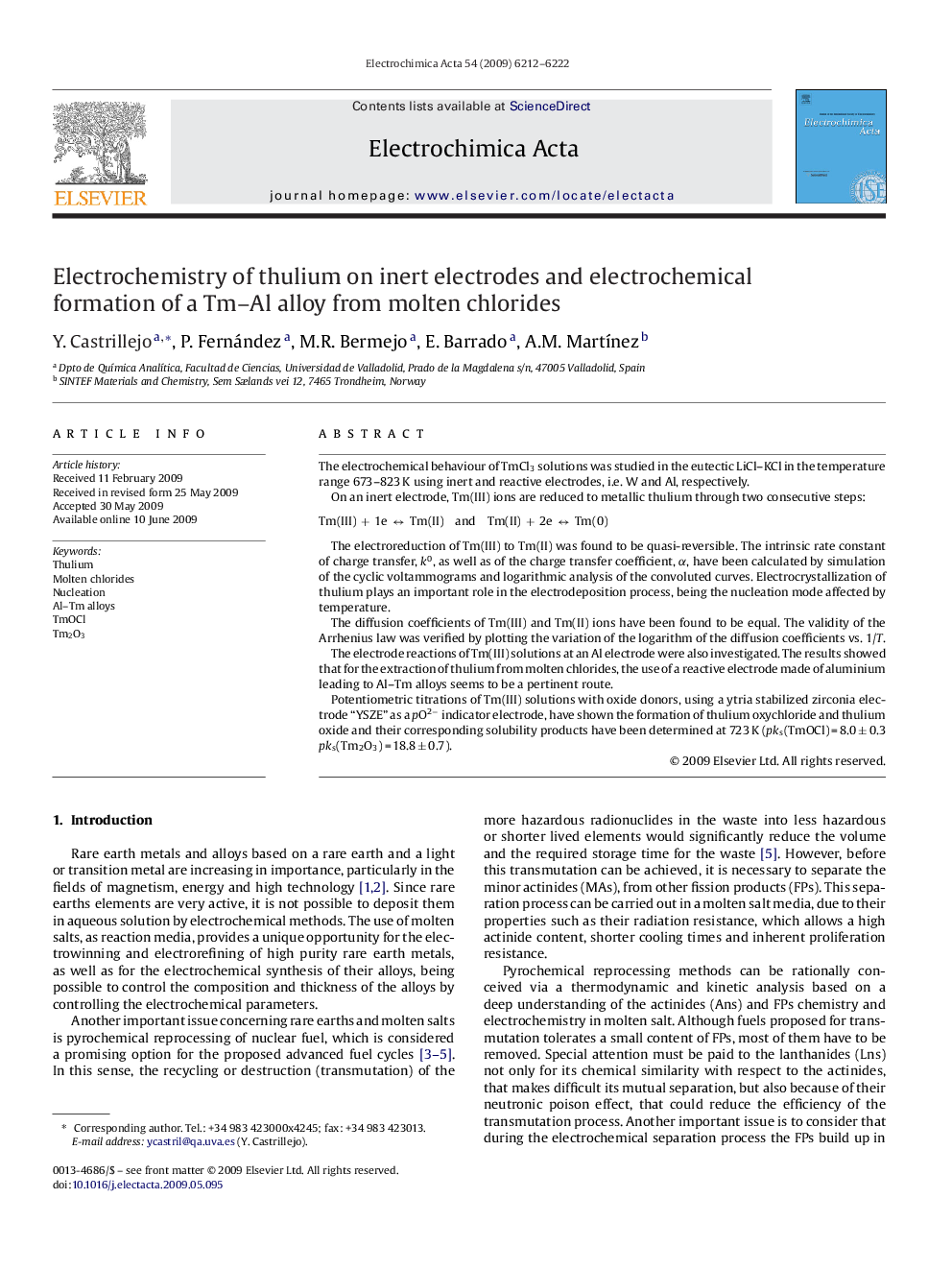| Article ID | Journal | Published Year | Pages | File Type |
|---|---|---|---|---|
| 193189 | Electrochimica Acta | 2009 | 11 Pages |
The electrochemical behaviour of TmCl3 solutions was studied in the eutectic LiCl–KCl in the temperature range 673–823 K using inert and reactive electrodes, i.e. W and Al, respectively.On an inert electrode, Tm(III) ions are reduced to metallic thulium through two consecutive steps:Tm(III) + 1e ↔ Tm(II) and Tm(II) + 2e ↔ Tm(0)The electroreduction of Tm(III) to Tm(II) was found to be quasi-reversible. The intrinsic rate constant of charge transfer, k0, as well as of the charge transfer coefficient, α, have been calculated by simulation of the cyclic voltammograms and logarithmic analysis of the convoluted curves. Electrocrystallization of thulium plays an important role in the electrodeposition process, being the nucleation mode affected by temperature.The diffusion coefficients of Tm(III) and Tm(II) ions have been found to be equal. The validity of the Arrhenius law was verified by plotting the variation of the logarithm of the diffusion coefficients vs. 1/T.The electrode reactions of Tm(III) solutions at an Al electrode were also investigated. The results showed that for the extraction of thulium from molten chlorides, the use of a reactive electrode made of aluminium leading to Al–Tm alloys seems to be a pertinent route.Potentiometric titrations of Tm(III) solutions with oxide donors, using a ytria stabilized zirconia electrode “YSZE” as a pO2− indicator electrode, have shown the formation of thulium oxychloride and thulium oxide and their corresponding solubility products have been determined at 723 K (pks(TmOCl) = 8.0 ± 0.3 pks(Tm2O3) = 18.8 ± 0.7).
